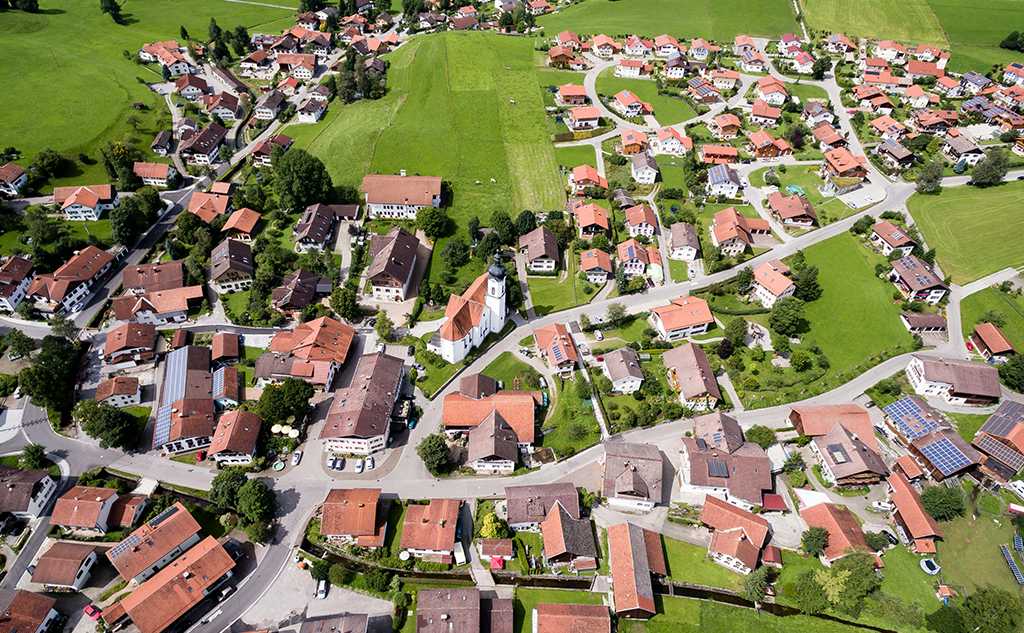Announced in late August 2022, France’s Green Fund was rolled out in January 2023 to support regional authorities and their public and private partners involved in accelerating the green transition. A budget of €2 billion was distributed among regional prefects, who then allocated the credit depending on the specific needs of each region. The Fund has been extended until 2027 and boosted this year to €2.1 billion per year.
Which activities does it encompass?
The Green Fund is designed to finance three types of activity: it aims to help local authorities improve their environmental performance, adapt their region to climate change and enhance their living environment, as well as providing engineering support.
In terms of improving their environmental performance, local authorities can submit projects to renovate the energy performance of public buildings, promote the sorting and recovery of biowaste, and renovate public lighting. For adapting their region to climate change, they can put forward projects on risk prevention (floods, forest and wildfires, emerging risks in the mountains, etc.), damage caused by cyclones in overseas territories, improved land-use planning in the light of coastal erosion, or the renaturing of communities. Finally, in relation to enhancing their living environment, local authorities can submit projects for the creation of low-emission zones (LEZ), the promotion of carpooling, the reduction in consumption of natural areas, or land artificialisation. Local authorities must be able to call on expertise in all these areas, via the “engineering support” provided by the Fund. The French Ministry of Ecological Transition also offers fifteen support guides to help local authorities with their projects(1).
Key figures for the Green Fund in 2023
- 17,860 applications filed by over 10,300 project sponsors in 8,400 municipalities.
- More than 12,800 applications processed, over 10,400 of which were accepted and received a share of the €2 billion budget.
- Renovating energy performance of public buildings and modernising public lighting account for over half of the initiatives supported (3,276 and 2,475 applications, respectively). Biodiversity, renaturing of towns and cities and land recycling are also well represented.
How much?
The value of the grants allocated varies depending on the project. They range from €5,600 for renovating lighting installations and programming clocks in a small municipality, to over €1 million for initiatives such as the complete energy renovation of a school grounds, the reconversion of an old school building into a public service hub, the energy renovation of buildings (aquatic centres, sports complexes, public buildings, etc.), the demolition/decontamination and renaturing of a quay, the restoration of a former brownfield site, urban planning combining risk mitigation with improving the living environment, hydraulic structures for flood management, almost €2 million to renovate a school sports complex or renovate/optimise a school grounds, and €2.5 million to transform a neighbourhood into an eco-district.
New for 2024
In a circular dated 28 December, Christophe Béchu informed prefects that the Green Fund was being renewed for 2024, that it was being expanded and would operate on a multi-annual basis. This year’s priority is the environmental performance of buildings, with a particular focus on renovating schools. The final amount will be €2.1 billion instead of the €2.5 billion initially forecast.
Two new measures will feature in 2024. Firstly, the Green Fund will help support “industrial regions undergoing a green transition” with €100 million for “industrial investment projects helping to discover, enhance and reindustrialise strategic value chains for the green transition.” It will also enable sustainable mobility to be developed in rural areas, the idea being that “within three years, each region must have a mobility strategy and a sustainable, innovative and inclusive mobility scheme.” Furthermore, “regions will be supported as they look to acquire a range of adapted mobility services” and “the most vulnerable populations in these regions will receive support for their travel.” With this in mind, the France Rurality plan has been integrated within the Green Fund, to the value of €30 million per year over three years.
However, the “Supporting the National Biodiversity Strategy 2030” initiative focusing on “improving quality of life” has now been transferred to the new Biodiversity Fund. In 2023, this initiative helped support a plan to combat four invasive exotic species in Martinique(2), optimise an avalanche control structure, restore and develop wild sand dunes, and acquire and restore reservoirs of biodiversity.
Upcoming assessment of the fund
The Green Fund is one of the ecological planning tools currently being implemented across regions. Every region in mainland France and its overseas territories has already benefited from it. An overall impact assessment is scheduled for 2024 to review the projects subsidised in 2023.
1) Energy renovation of local public buildings; Renovating public lighting installations; Promoting the sorting at source and recovery of biowaste; Protecting buildings against cyclonic winds; Forest and wildfires; Flood prevention; Mountain communities; Renaturing towns and villages; Carpooling; Land recycling; Low-Emission Zones; Engineering ; Rural mobility; Industrial regions in green transition. The “Coastal erosion” support guide will be published in 2024. All these support guides, as well as the “Guide for local decision-makers”, can be downloaded directly from https://www.ecologie.gouv.fr/fonds-vert
2) As a reminder, Martinique is located in one of the world’s 36 biodiversity “hotspots” (the Caribbean).
Learn More: Sponge cities – Financing programmes to improve ground permeability




